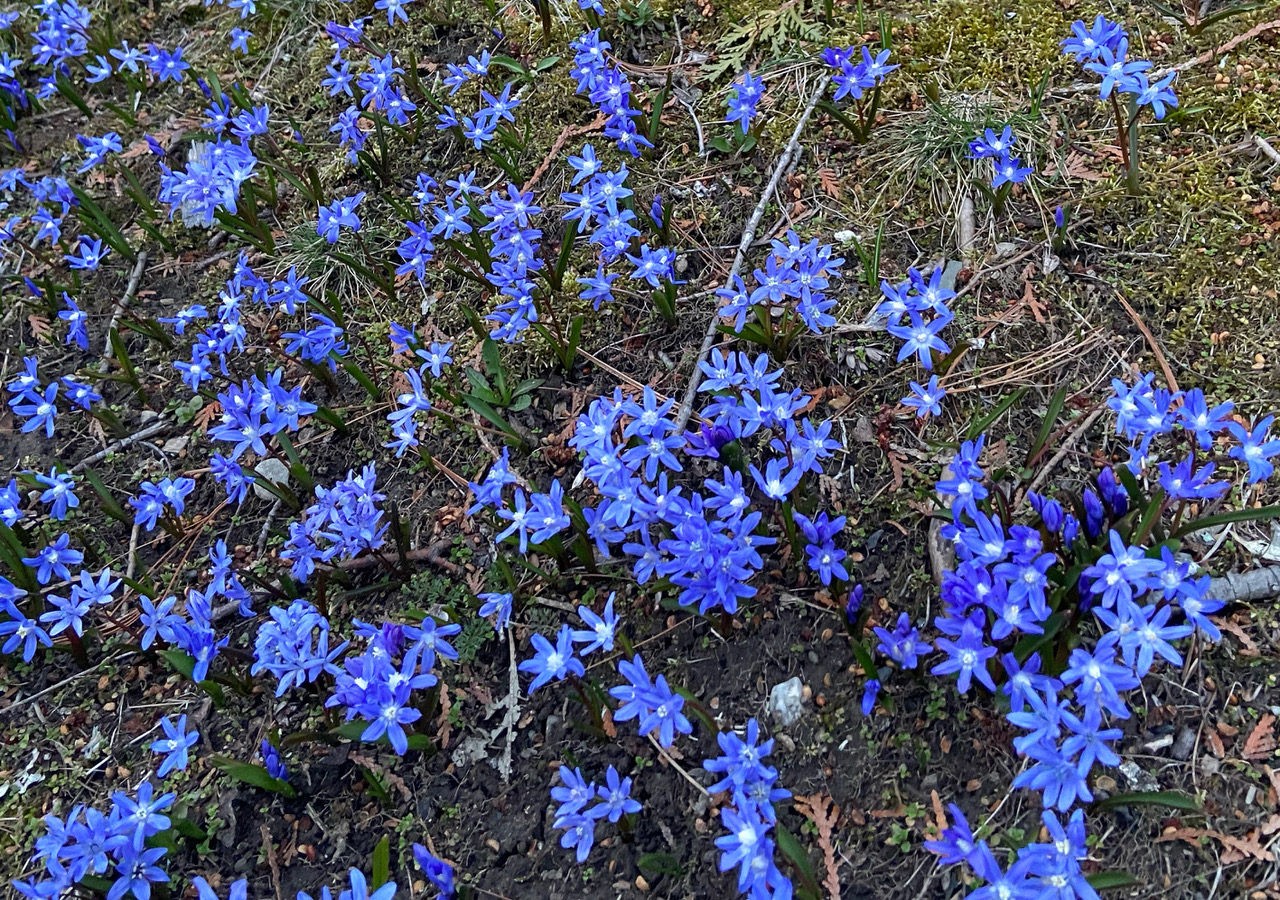
Glory-of-the-Snow
When I was young, mothers let their children roam free. I don’t think Vermont parents of the mid-1960s gave this much thought except to feel relief that the kids were not underfoot. After being shooed out of the house, we were not expected to show up again until it was time to wash our hands for dinner. And, unlike today, there were no prearranged play dates unless we arranged them for ourselves.
In our neighborhood, the small fry traveled in and out of each other’s houses and backyards depending on our moods and parental tolerance. The Roys had the largest yard; we could play kickball there. For private conversation and snacks, we’d visit the Graham household diagonally across the street.
In summer, we often traveled in a pack of four, five, or six, the oldest trailing our younger siblings. A favorite activity for all was to explore the dense woodlot at the center of the block.
Those woods were mysterious, dark, and a little spooky. They were bordered by houses on every side, so getting lost was impossible, but being inside that dense shady quiet was still spooky, particularly if you were like me and tended to wander off on your own. On a few occasions, we stumbled upon an empty tin can or an old campfire that indicated people we referred to (in those politically incorrect days) as “tramps” had passed through. Then again, for all we knew, those unwelcome visitors could have been dragons leaving rings of fire we discovered so long after the fact that only cold chunks of charcoal remained.
The woods held other less chill-inducing strangers we encountered with curiosity but no fear—overgrown lilacs and dogwoods, the occasional tulip or narcissus, thick clumps of lily-of-the-valley, and swaths of creeping myrtle. These grew mainly in an area bordered by a path that defined and bisected a good-sized rectangular plot. I didn’t understand what this meant as a ten-year-old. But by the time I was a teenager, I surmised it was the ruins of an extensive formal garden.
Perhaps it was those woods that spawned my curiosity about the past. I am always looking for and speculating about the landscape around me and the people who inhabit it. That curiosity drives what I write; when I can’t explain what I’m seeing, I feel compelled to make up a story to explain it.
Forty years after first encountering that woodlot, I walked my standard poodle, Ollie, in a field that was all that remained of it. Trees had been felled and most of the topsoil sold away by a less than savory developer. I mourned what had been lost and still do. But when chasing after wild blackberries at the edge of the field, I discovered a flat outcropping with the names of long-gone children carved into the surface. It had been exposed when the topsoil came off. One boy, James Pratt, added the date of his carving—1832. On another walk through the town’s oldest cemetery, I found him a second time. I plan to borrow his name for the hero of my next novel, but that is not the story I’m telling today.
Today, I want you to know that although the the wood is no longer there, the bordering ground still turns a deep periwinkle blue in spring, just as it did during my childhood, as yards and yards and yards of Chionodoxa bloom, arriving around the same time as crocuses emerge.
As children, we loved picking those flowers. But my sister and I also dug up a bulb here and there that we transplanted in our lawn—our mom didn’t visit the woods and we wanted her to experience that blue carpet for herself. In time, those purloined bulbs multiplied. What you see in the photo is a small portion of their progeny.
For the past dozen years, I’ve spent winters in Georgia, returning home in April. I have thus missed the Chionodoxa—or “Glory-of-the-Snow,” which is the common name of these cheerful flowers native to western Turkey.
At times there have been more of them in our yard than there are at present. Little did Mom know, those Norwegian maples she planted to replace the huge elms that died of Dutch Elm disease hate sharing their shade with other plants, including tiny bulbs. Still, the Chionodoxa remain. Each spring, they own the terrain in front of our house, seeming to materialize on a single day in a mass of exuberant color.
COVID-19 kept me in Vermont this winter, so I was able enjoy the Chionodoxa bloom. In truth, I had forgotten they existed, which made them a particularly joyful sight, a sign of hope and renewal as we rise out of this dark year of grief and isolation.
How could I have forgotten them? Likely the same way I have forgotten many of the details of a life that disappeared over the past year.
I’d like to believe that long after my family’s home belongs to another, and those maples are no more, the sweet little bulbs my sister and I planted will continue to flourish, blanketing the lawn in a spring fanfare of periwinkle. Maybe a few brazen little girls will stop to pick them and even pilfer a bulb or two for their own family’s front yard. I hope so.